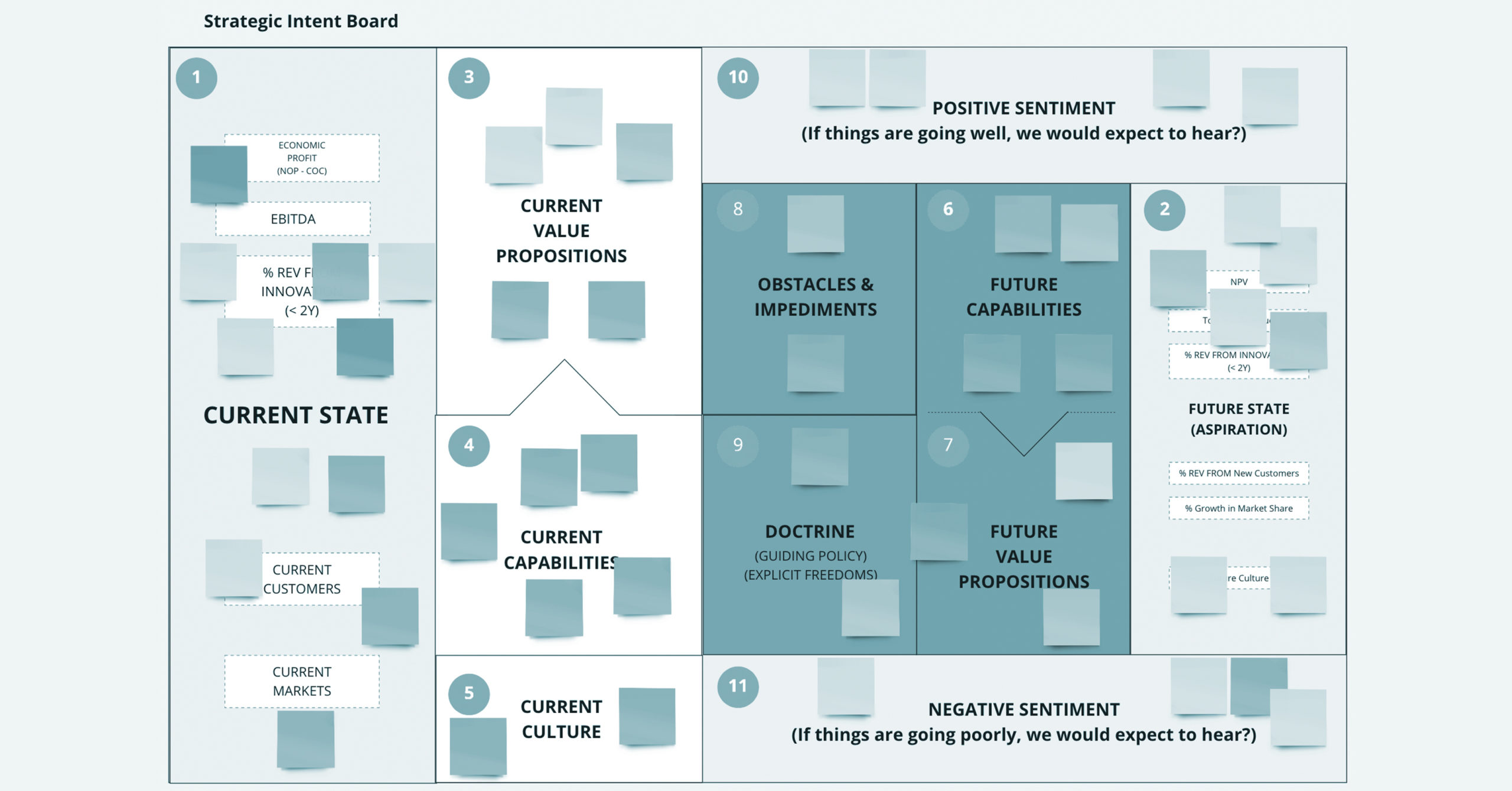Strategic Coherence – You Can’t Hope Your Way to Strategic Alignment
Effective strategy execution isn’t (just) about alignment, however, cascading goals through common frameworks like OKRs to create alignment to the strategic priorities is the first step towards effective strategy execution. The question for many leaders that have a clearly articulated and well-designed strategy (not just buzz words and wishful thinking), is why their teams seem to struggle to execute that strategy and deliver on the objectives. To deploy a strategy requires a team to first have a shared understanding of what that strategy is and what it means.
One simple exercise we deployed recently with a client investment team was to understand their current condition of alignment, or lack thereof, to the strategy of the organization. While the Business Unit President and Chief Strategy Officer on the investment team had rightly believed they had communicated the strategy many times through emails, presentations, town halls, and 1:1s, fully 60% of the organization either believed that there was no strategy, or they had no idea what the strategy meant to them. A smaller percentage believed it was the wrong strategy. The result of this alignment gap was that portfolio teams struggled to orient their product backlogs to value, and teams struggled to execute. Clearly, something was missing.
A simple activity we devised to check for coherence, alignment or dissonance was to leverage a Strategic Intent template. (e.g. the Strategy Template attached will do just fine for this purpose). We asked each member of the investment team to take it, and using any information available to them, fill it out. We gave them explicit instructions to time-box the activity to no more than 30 minutes and return the template without their name within 24 hours.

We then decomposed all the responses onto virtual post-its in Miro and placed them on a Strategic Intent Board. Now we had data! In the next working session, we reviewed and discussed the gaps or differences in responses to all the answers which were now on post-its on the board. What we found was a pretty significant lack of alignment (<61% normalized and aggregated responses to each question), but within a few hours, the entire team was able to come together, discuss the gaps, align on the most important elements of the strategy (including a diagnosis of the challenge, guiding policies, coherent action, and measures), and craft a strategic intent they felt comfortable presenting to the Business Unit President to receive feedback and critique.
From this interaction with the BU President, the investment team learned they were missing an important aspect of the strategy: how they will address and exploit the opportunity (as yet undefined) with a key stakeholder in a multi-sided ecosystem. This back-briefing created a vertical feedback loop and allowed them to listen, adapt, and respond so that now the team knows they are aligned with the strategy. Creating a shared understanding of the strategy allowed them to generate the right Objectives and Key Results needed to cascade to their portfolio teams. The Investment Team also knows they need to ask a working group to leverage something like an Opportunity Canvas (or Business Model Canvas) to create clarity around a value proposition for this key stakeholder. Right now, if it exists, it’s only in the minds of a few executives in the marketing organization.
Key Lesson: if we believe that a significant obstacle to effectively executing a strategy is having a shared understanding of what that strategy is (alignment) — it’s useful to probe that dissonance and create the space for shared understanding and alignment to emerge so that it can inform trade-off decisions down into the system of delivery. Something to consider.
My colleague Scott Sehlhorst and I were discussing a similar challenge recently, and he offered a perspective from systems thinking, “any system has emergent properties which cannot be predicted by looking at any of the varied interactions between any two participants.” Oftentimes, we use certain communication channels and tools to deploy strategies through emails or presentations or 1on1s with our leadership teams. The challenge is that wholes behave differently than parts, and all these local interactions prevent the whole (the team) from having a shared understanding.
Instead of a number of disconnected conversations (or 1:1s) without proper feedback loops, there is value in bringing the entire executive or investment team together, generating and visualizing the data about a particular challenge they’re facing to show discrepancies, contradictions, or gaps in understanding, and generate meaningful conversations to close those gaps, make choices, and create alignment. Alignment is a product of intentional design. You can’t hope your way to alignment.
Sometimes, identifying and closing those gaps in the vertical feedback loops is our job as we coach teams to align around a shared understanding of their mission and purpose; then ensuring horizontal feedback loops are in place to coordinate their actions which are oriented towards value, and then measure the key results against their outcome hypothesis so as to adapt their next actions to move towards achieving their objectives. While I hope this is useful and perhaps gives y’all something to try, remember that hope is not a strategy when portfolio teams struggle orienting their backlogs to value and executing to deliver the strategic objectives.


